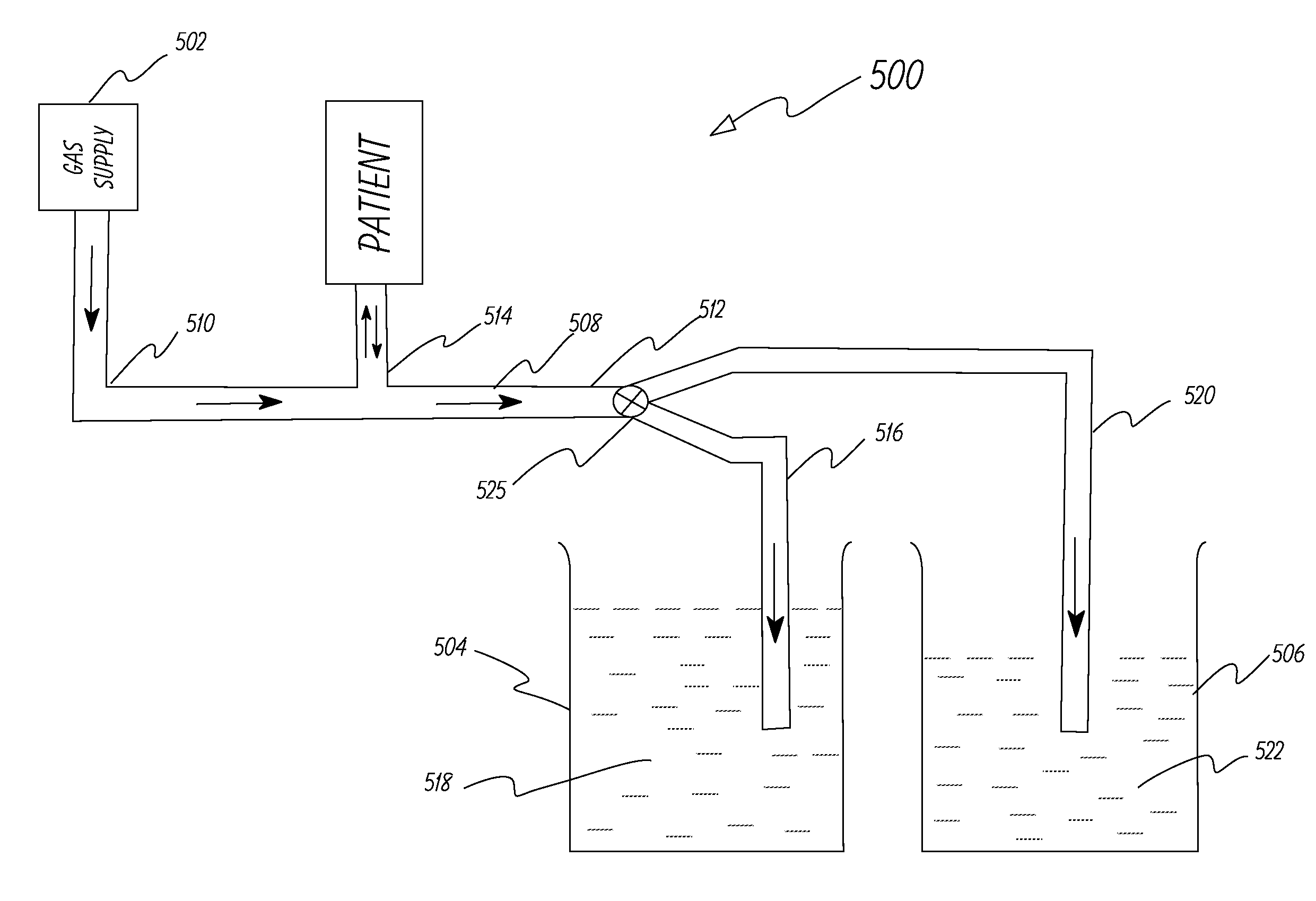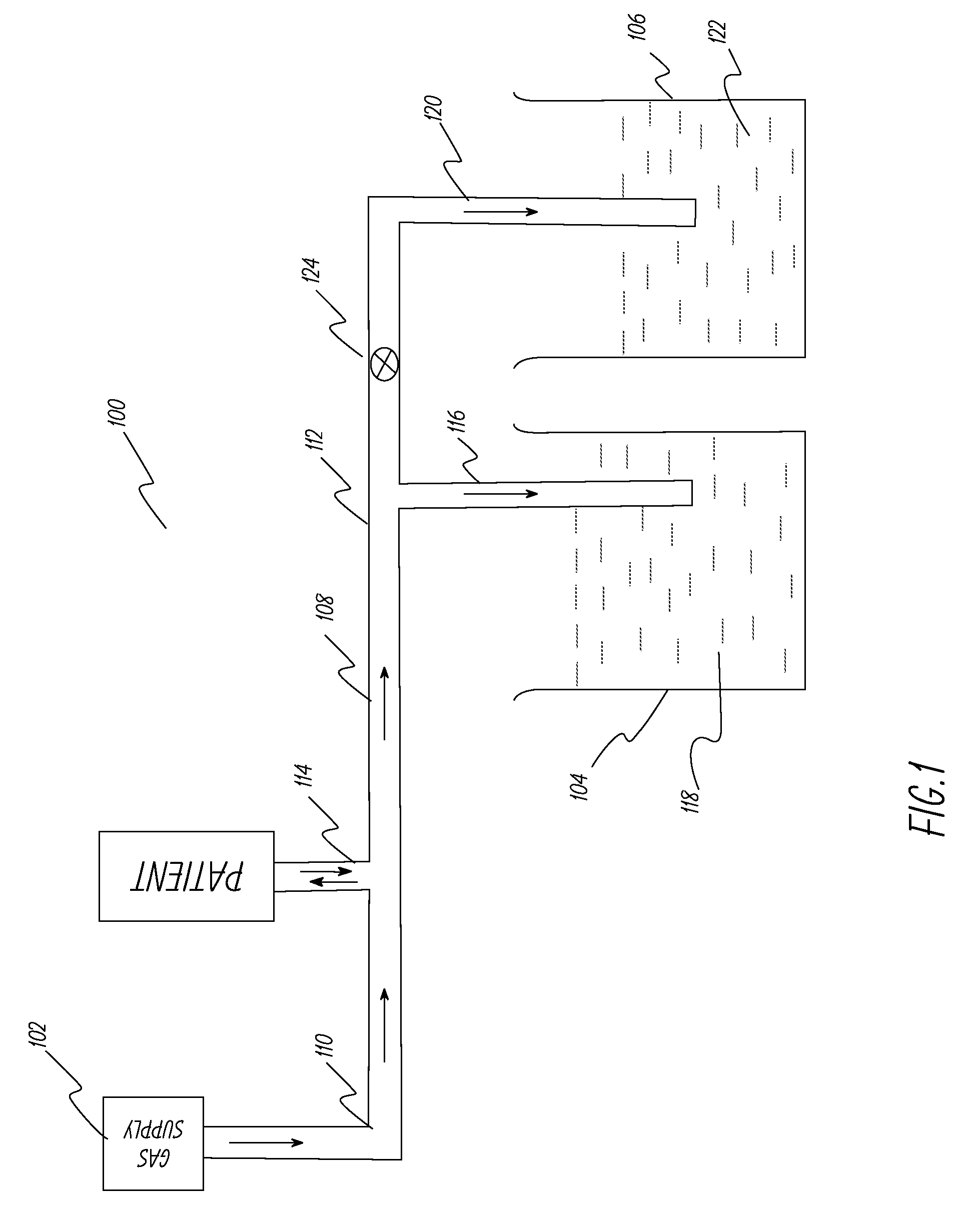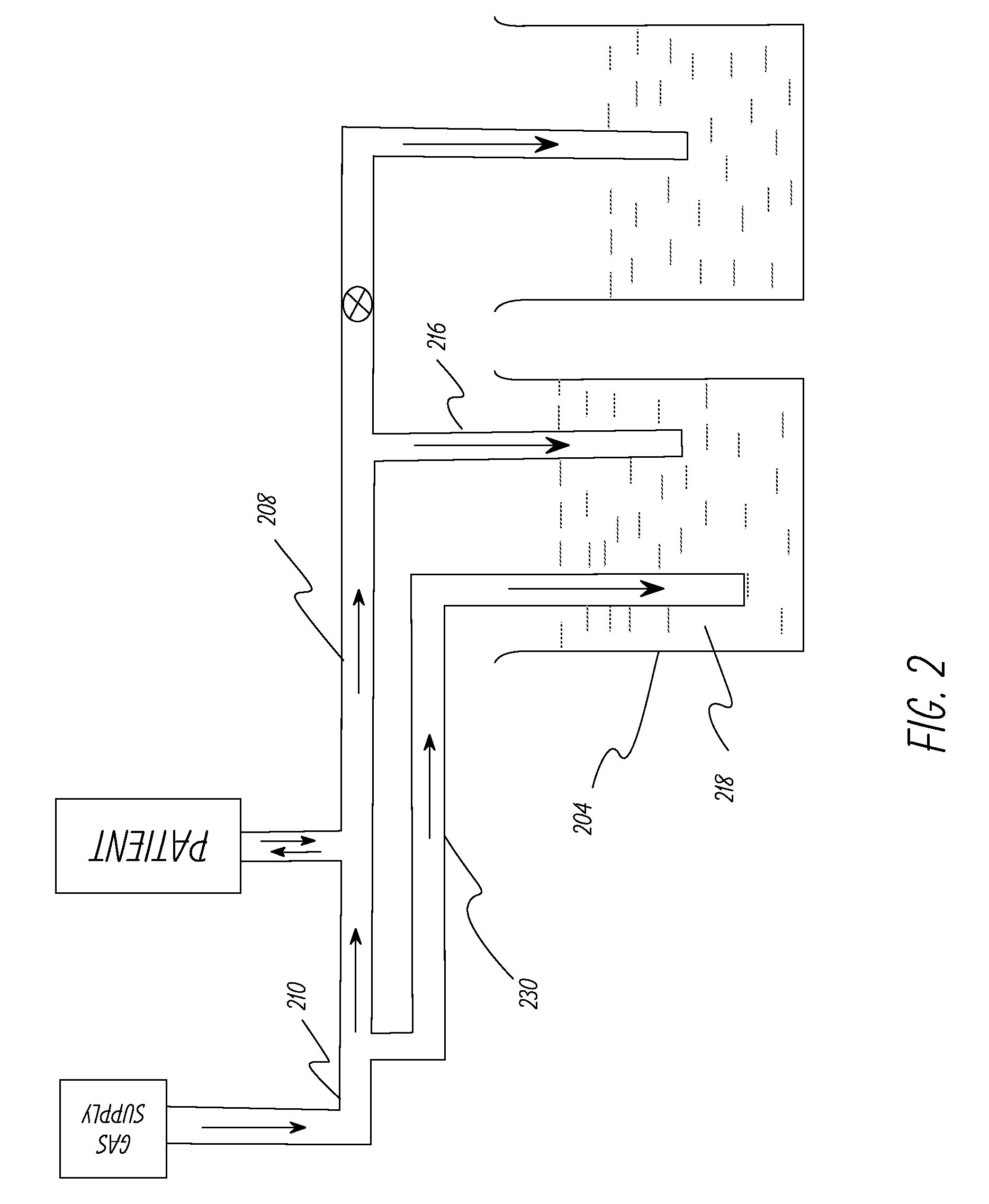Apparatus and method to provide breathing support
a technology of apparatus and breathing support, applied in the field of apparatus and methods to provide breathing support, can solve the problems of inability to set and vary, device operation and maintenance requires substantial training and expertise, and is generally expensive and out of the reach of a large portion of the population, so as to achieve easy and less expensive operation, simple, reliable, easy to adjust
- Summary
- Abstract
- Description
- Claims
- Application Information
AI Technical Summary
Benefits of technology
Problems solved by technology
Method used
Image
Examples
example 1
[0053]This example describes the ventilator system used and experiments performed to test the system described in FIG. 1. A lung machine manufactured by Ingmar Medical, Pittsburgh, Pa. (www.ingmarmed.com) was connected at patient interface of the ventilator system. A two-port (two-way) solenoid valve manufactured by MAC Valves, Inc., Wixom, Mich. (www.macvalves.com) was used in the system. The open-shut cycle of the valve was controlled using an electronic timer made by IDEC Corporation, Sunnyvale, Calif. (us.idec.com). Compressed air and air / oxygen mixtures were used in the tests. The tubing used was the standard 10 mm tubing used with conventional ventilator systems in a hospital setting. The fluid in the containers was water at room temperature. The pressure at the patient interface was measured using a manometer manufactured by Life Design Systems, Inc., Madison, Wis. The manometer had a range of −20 cm water to +80 cm water in increments of 1 cm water. Tests were run for gas fl...
example 2
[0056]The system in Example 1 was modified to include a safety duct as shown in FIG. 2. The safety duct was set at a pressure 3 cm of water above the PIP pressure. The primary duct was intentionally squeezed at the distal end to simulate occlusion of the duct and the safety duct released the pressure buildup when the pressure at the patient interface reached 3 cm of water above the PIP pressure. The tests were repeated successfully at different pressure levels.
example 3
[0057]This example describes the ventilator system used and experiments performed to test the system described in FIG. 5. A lung machine manufactured by Ingmar Medical, Pittsburgh, Pa. (www.ingmarmed.com) was connected at patient interface of the ventilator system. A three-port (three-way) solenoid valve manufactured by MAC Valves, Inc., Wixom, Mich. (www.macvalves.com) was used in the system. The size of the three-port valve was the same as the two-port (two-way) valve used in Example 1. The cycling of the valve was controlled using an electronic timer made by IDEC Corporation, Sunnyvale, Calif. (us.idec.com). Compressed air and air / oxygen mixtures were used in the tests. The tubing used was the standard 10 mm plastic tubing used with conventional ventilator systems in a hospital setting. The fluids in the containers were water at room temperature. The pressure at the patient interface was measured using a manometer manufactured by Life Design Systems, Inc., Madison, Wis. The manom...
PUM
 Login to View More
Login to View More Abstract
Description
Claims
Application Information
 Login to View More
Login to View More - R&D
- Intellectual Property
- Life Sciences
- Materials
- Tech Scout
- Unparalleled Data Quality
- Higher Quality Content
- 60% Fewer Hallucinations
Browse by: Latest US Patents, China's latest patents, Technical Efficacy Thesaurus, Application Domain, Technology Topic, Popular Technical Reports.
© 2025 PatSnap. All rights reserved.Legal|Privacy policy|Modern Slavery Act Transparency Statement|Sitemap|About US| Contact US: help@patsnap.com



